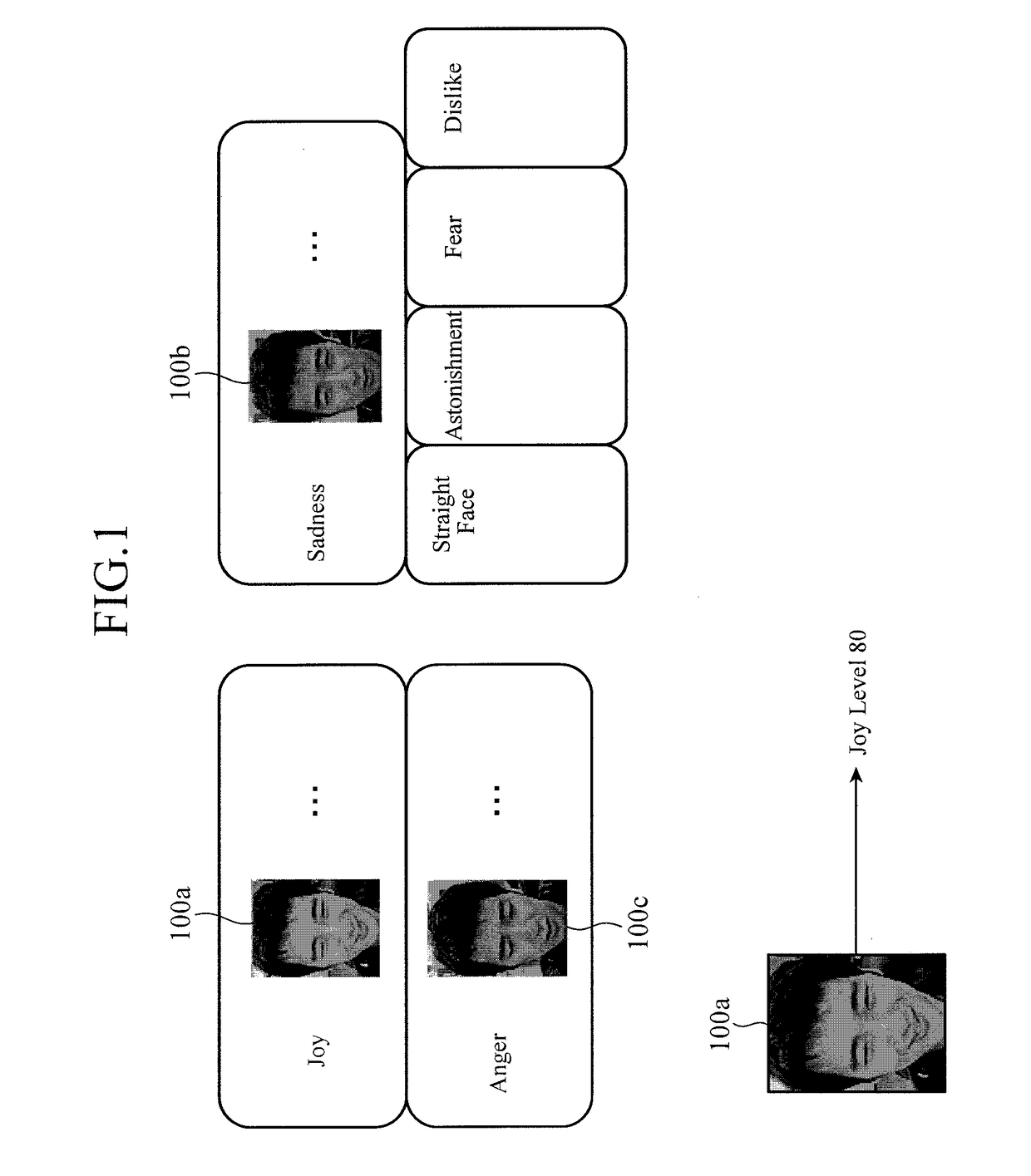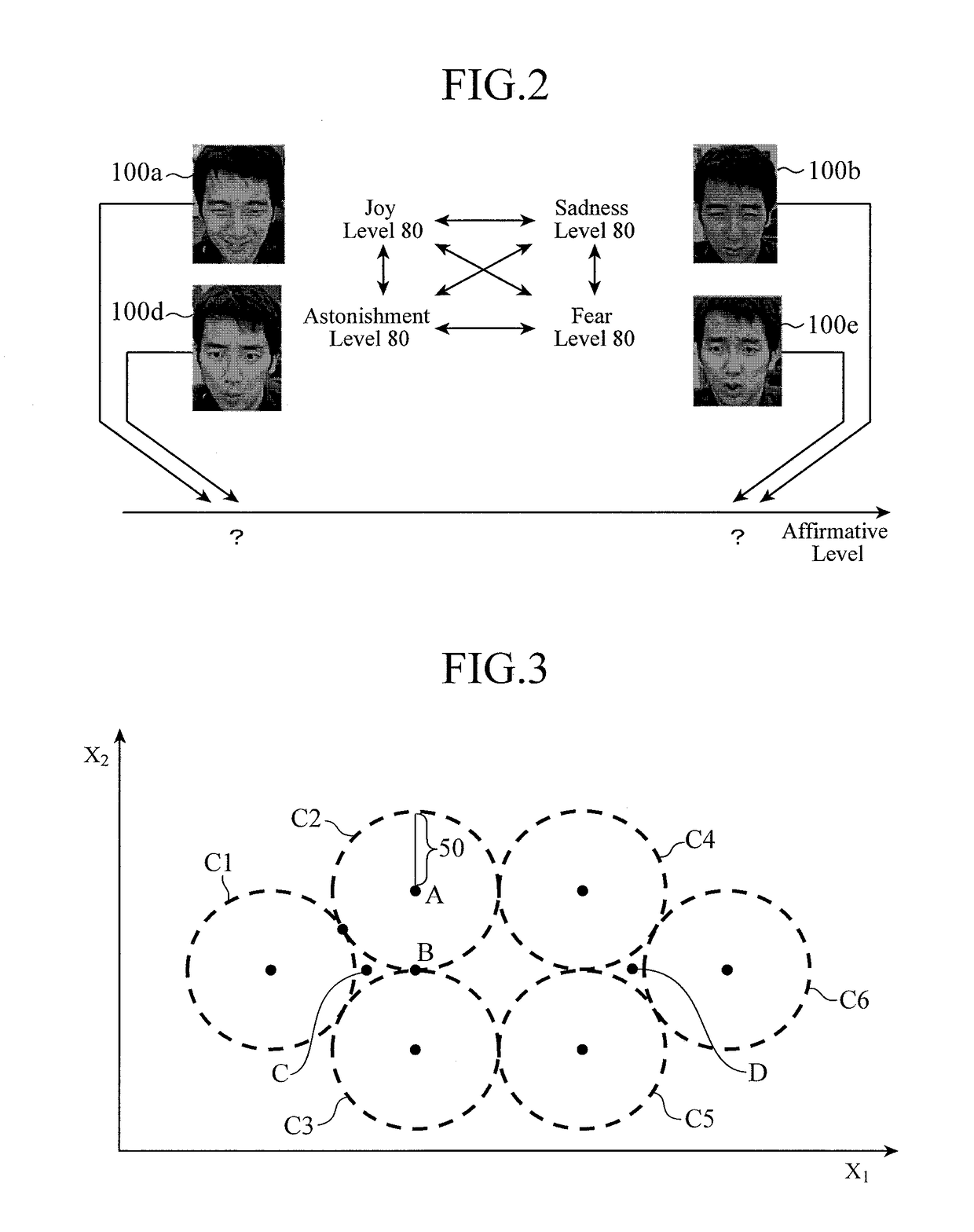Learning device and learning discrimination system
a learning discrimination and learning device technology, applied in the field of learning devices and learning discrimination systems, can solve the problems of not being able to determine the value of the result of n-classes discrimination, and the inability to compare the discrimination results of different classes through the discrimination criterion of m-class discrimination
- Summary
- Abstract
- Description
- Claims
- Application Information
AI Technical Summary
Benefits of technology
Problems solved by technology
Method used
Image
Examples
embodiment 1
[0032]FIG. 1 is a diagram illustrating an overview of image discrimination in facial expression discrimination. In facial expression discrimination, seven pieces of classification labels for joy, sadness, anger, straight face, astonishment, fear, and dislike are common as described above, and thus N=7 holds. In this seven-classes discrimination problem, an image to be discriminated is classified as a class of a discriminator, which outputs the highest discrimination score after the image is input to discriminators of respective classes, and discrimination results are obtained through a discrimination criterion of each of the classes.
[0033]In FIG. 1, an image 100a is classified as a class of the label “joy”, an image 100b is classified as a class of the label “sadness”, and an image 100c is classified as a class of the label “anger”. With regard to the image 100a, “joy level 80” for example is output as a discrimination result. The joy level corresponds to a certainty factor indicati...
embodiment 2
[0121]FIG. 9 is a block diagram illustrating a functional configuration of a learning device 2A according to Embodiment 2 of the invention. In FIG. 9, the same component as that in FIG. 1 is denoted with the same symbol and descriptions thereon are omitted.
[0122]A learning device 2A includes a learning sample collector 2a, a classifier 2b, a learner 2c, and an adjuster 2d. The adjuster 2d adjusts the ratio of the quantity of samples between classes of the learning samples, which have been reclassified by the classifier 2b, to decrease erroneous discrimination in the M-classes discrimination.
[0123]Similarly to the Embodiment 1, functions of the learning sample collector 2a, the classifier 2b, the learner 2c, and the adjuster 2d in the learning device 2A may also be implemented by dedicated hardware or by software or firmware.
[0124]Part of the functions may be implemented by dedicated hardware while the other parts may be implemented by software or firmware.
[0125]Next, operations will...
PUM
 Login to View More
Login to View More Abstract
Description
Claims
Application Information
 Login to View More
Login to View More - R&D
- Intellectual Property
- Life Sciences
- Materials
- Tech Scout
- Unparalleled Data Quality
- Higher Quality Content
- 60% Fewer Hallucinations
Browse by: Latest US Patents, China's latest patents, Technical Efficacy Thesaurus, Application Domain, Technology Topic, Popular Technical Reports.
© 2025 PatSnap. All rights reserved.Legal|Privacy policy|Modern Slavery Act Transparency Statement|Sitemap|About US| Contact US: help@patsnap.com



